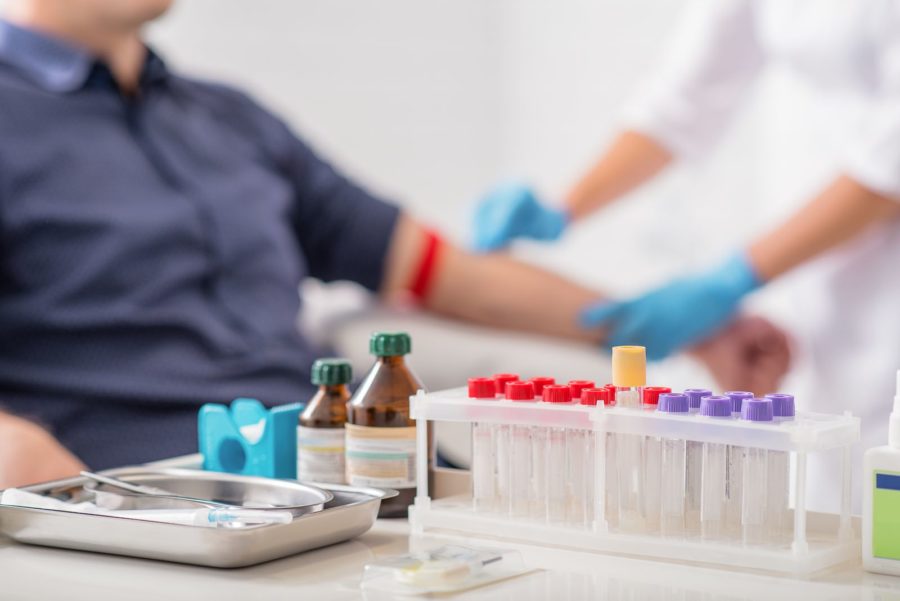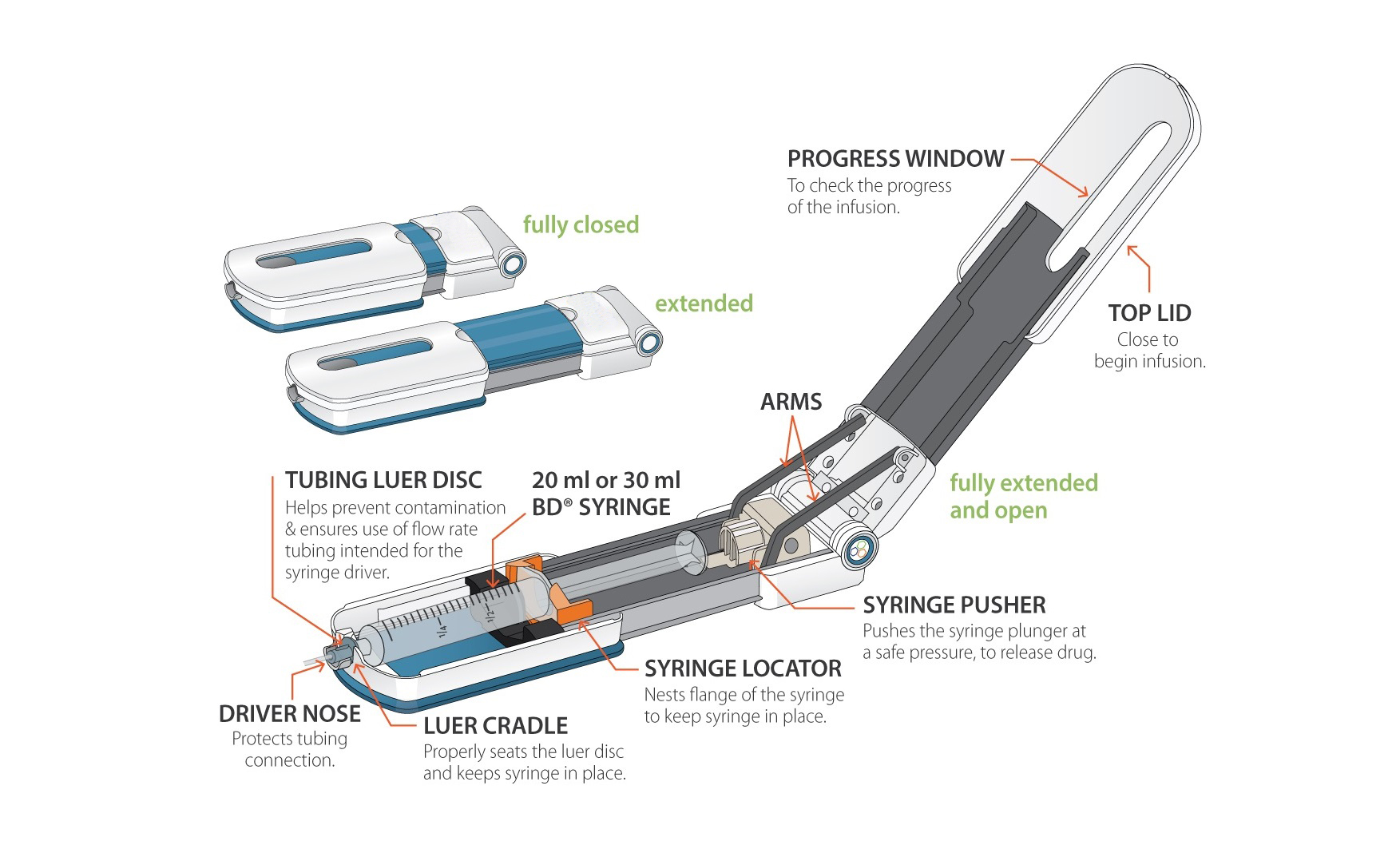Indications for Treatment
Pegcetacoplan (Aspaveli) is used for treating paroxysmal nocturnal haemoglobinuria in adults who have anaemia after at least 3 months of treatment with a C5 complement inhibitor (Eculizumab/Ravulizumab). Pegcetacoplan (Aspavelli) is a C3 complement inhibitor, used for the treatment of PNH anaemia and extravascular haemolysis.
Risks
Meningococcal/Pneumococcal/Haemophilius Infection
Due to its mechanism of action, the use of Pegcetacoplan (Aspaveli) increases the patient’s susceptibility to Meningococcal infection, Pneumococcal infection and Haemophilus influenzae type B infection.
- Patients who are already on C5 inhibition will have already been vaccinated for meningococcal infection: ensure antibody titres are adequate and Bexsero vaccination is up-to-date.
- In addition, all patients must be vaccinated prior to/ on the day of receiving Pegcetacoplan (Aspaveli)with Prevenar vaccine for Pneumococcal infection and Menitorix for Haemophilus influenzae type B infection.
- Patients must be re-vaccinated according to current medical guidelines for vaccination use.
- 3 doses of paracetamol should be prescribed around the Bexsero vaccination, with one pre-medication and 2 to follow 4 hourly.
- The patients on Pegcetacoplan (Aspaveli) should be prescribed Penicillin V 500 mg twice daily. Patients who are allergic to penicillin should receive erythromycin 500 mg bd.
- All patients are given a rescue antibiotic to keep at home in case of a possible infection of meningitis. This is Ciprofloxacin 500 mg x3 doses (increased to 10 doses during the COVID-19 pandemic)
- If the patient shows any signs of infection, the PNH team should be contacted immediately on 0113 2068625 or out of hours: 07920535918
Side Effects
The most common side effects with Pegcetacoplan (Aspaveli) are injection site reactions (reddening of the skin, itching, swelling and site pain), upper respiratory tract infection, abdominal pain, diarrhoea, headache, tiredness.
Breakthrough Haemolysis
Patients on Pegcetacoplan have a raised Hb and high PNH proportion of red cells in a small number of patients at times of risk e.g. infection, vaccination, the complement system may become overwhelmed and haemolysis may occur.
Symptoms would include breathlessness, jaundice or a recurrence of PNH symptoms.
Lab parameters would include raised LDH, low Hb, high reticulocyte count.
This may be brisk and Hb may fall rapidly – the PNH team should be contacted immediately if there are concerns 0113 2068625 or out of hours 07920535918.
Dose
1 vial of Pegcetacoplan (Aspaveli) 1080 mg is given twice a week (on days 1 and 4). Pegcetacoplan (Aspaveli) is given as an infusion (drip) via FreedomEdge™ Subcutaneous Infusion Pump under the skin in the belly, thigh or upper arms.
Some patients may require an increased dose to 1 vial (1080 mg) every three days or three times a week. Where this dosing change is required, this will be determined by the PNH team.
Procedure for Treatment Administration
Please note, all patients will be trained on how to use the equipment and infuse the treatment.

Materials needed for each infusion:
- Three (3) Alcohol wipes
- One (1) Pegcetacoplan (Aspavelli) 1080 mg vial
- One (1) Vial Adapter (WestPharma)
- One (1) Double High-Flo Subcutaneous Needle Set™
- One (1) Precision Flowrate Tubing™
- One (1) 20-mL BD Syringe
- One (1) FreedomEdge™ Subcutaneous Infusion Pump – reusable (See Diagram 1)
- One (1) Sharps Container

1. Drug Preparation
Assemble supplies needed for the infusion (listed above). Take one Pegcetacoplan (Aspaveli) vial out of the refrigerator and leave at room temperature for 15 to 30 minutes.
DO NOT shake the vial.
DO NOT warm the vial (i.e. in a microwave, hot water, heating blanket, etc.).
Note: After removing from the refrigerator, fresh vials can be kept at room temperature for up to 2 hours.
Thoroughly clean a trolley/surface using one of the alcohol wipes.
Inspect the drug by gently swirling the vial, inspecting for colour changes or particulates. Pegcetacoplan (Aspavelli) solutions should be clear, colorless to slightly yellow.
- DO NOT use the vial if the liquid looks cloudy.
- DO NOT use the vial if it contains particles.
- DO NOT use if there is change in colour.
- DO NOT use if the protective cap is missing.
- DO NOT use the vial if the expiration date has passed.
- If the vial does not pass visual inspection, please use a different vial and contact the specified number to report the event.
- Wash and dry your hands.
- Prepare the drug vial.
- Remove flip-off seal from vial.
- Wipe the rubber stopper on the top of the vial with an alcohol wipe. Remove top cover of the vial adapter package without removing the adapter from the package and remove top cover of vial adapter.
- Attach Vial Adapter to Drug Vial.
- Place and hold the vial on a flat surface and attach the adapter to the vial by placing over the top of the vial and pressing down firmly until the adapter snaps in place and the spike penetrates the rubber stopper.
- Remove the plastic packaging.
2. Fill Syringe
- Pull the plunger up and down twice, then pull out the plunger of the syringe to fill the syringe with air. Make sure the amount of air is the same as the amount of Pegcetacoplan (Aspaveli), you will transfer from the vial (20 mL).
- Firmly push Vial Adapter onto the Vial.
- Attach the 20 mL BD syringe to the Vial Adapter by turning it clockwise.
- Press the plunger rod down to push air into vial.
- Turn the vial upside down to get the solution on top of the rubber stopper and transfer entire contents of the vial into the syringe. Withdraw all the Pegcetacoplan (Aspavelli) Solution with a slow and steady motion.
- Remove the syringe from the vial adapter by turning it counterclockwise.
- Remove syringe by turning counterclockwise.
3. Attach Precision Tubing to Syringe and Infusion Set to Precision Tubing
- Connect the luer disc end of the precision tubing set to the syringe.
- Remove the end cap from the female luer of the Infusion needle set.
- Connect it to the precision tubing set. Twist firmly. Do not cross treads.
4. Prime Tubing
- While holding the needle facing up, slowly press the plunger of the syringe until the drug approaches the needles.
- Do not advance the drug to the end of the needles.
5. Prepare Pump/Load Syringe
- Pull firmly to fully extend the pump.
- Open the pump fully by lifting the top cover.
- With syringe markings facing up, push the syringe against the syringe locator.
- Seat the syringe rim into the syringe locator.
- Seat the luer disc inside the pump nose so that the syringe is firmly attached inside the pump.
6. Select Infusion Sites
The preferred site of infusion will be the abdomen. However, other acceptable areas include your thigh, upper arm, or inside upper leg/hip for the infusion. Use a different site from the last time you infused Pegcetacoplan (Aspavelli)
Rotate infusion sites:
- Infusion sites should be at least 3 inches apart from each other.
- New infusion sites should be at least 3 inches from previous sites.
- Never infuse into areas where the skin is tender, bruised, red or hard.
- Avoid infusing into scars, tattoos or stretch marks.
- Possible infusion sites : thigh, upper arm, inside of hip/leg.
7. Prepare Infusion Sites
Clean the injection sites with the provided alcohol wipes. Sites should be cleaned using a circular motion starting from centre outward. Allow to dry.
8. Insert Needle at Infusion Site
- Slide band back across the butterfly and down onto the tube.
- Fold the wings back and hold them together between two fingers so that needle guard is exposed.
- Carefully remove shield from the needle tip, without touching the needle.
- Pinch the skin and insert needle into subcutaneous tissue.
- Secure and cover with adhesive dressing.
- REPEAT process with second needle and second infusion site.
9. Start the Infusion
Begin the infusion by closing the pump lid. The infusion begins immediately.
10. Pausing the Infusion
- To stop the flow (pause the infusion), fully open the lid to relieve pressure from the syringe plunger.
- Resume by fully closing the lid again.
- When closing the pump, make sure that the top lid is fully extended and aligns with the bottom portion of the pump.
11. Checking Infusion Progress
Confirm infusion progress by checking the time the infusion started and periodically checking the elapsed time against the movement of the syringe plunger, as seen through the progress window. The approximate time is between 20 and 40 minutes for 20 mL.
12. End Infusion
- Confirm that the syringe is empty and open the pump by lifting the top cover.
- Remove the syringe. Hold the needle in place, remove the adhesive.
- Remove the needle in a straight motion, opposite the direction you inserted it.
- Remove needle from the syringe.
- Push the wings together and cover the needle.
- Apply even pressure at the safety closure circles located at the tip of the wings to squeeze closed.
- After wings are securely closed, DISCARD NEEDLE INTO SHARPS CONTAINER.
- REPEAT process for second needle and second infusion site.
- PLEASE DISPOSE NEEDLES IN SHARPS CONTAINER
- Gently remove the empty syringe by gently pushing it back to disengage the nose.
- Lift the syringe up, out of the pump.
Medication Storage
- Pegcetacoplan (Aspavelli) should be stored in the refrigerator (+2 to +8C) and removed 30 minutes prior to use.
- Do not freeze.
- Store in original packaging.
- If there is any doubt that the drug has been stored incorrectly, contact the referring centre immediately
